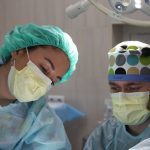
Physio and podiatrists work together to improve function, relieve pain and prevent further injury. This can include treating muscle and bone problems, tendon and joint injuries or conditions affecting your feet and ankles. They also treat foot-related skin conditions and problems with toenails, including ingrown nails and fungus infections.
Podiatrists are specialised healthcare professionals who use their knowledge of anatomy, physiology and biomechanics to help you with a range of conditions and issues in your feet, ankles and lower limbs. They are trained to assess the underlying cause of your condition and offer treatments that may include foot exercises, acupuncture, dry needling and shockwave therapy.
Musculoskeletal Physiotherapy is a form of physiotherapy that specialises in disorders that affect how your muscles and joints work together to move and function. Warwick physio can help you relieve pain, improve movement and prevent further injury using a variety of methods, such as muscle strengthening or stretching exercises, and soft tissue massage.
Orthotics
Custom-molded functional orthotics are designed to correct specific foot movements. This can be done with the help of x-rays, biomechanical tests and other diagnostic tools to identify structural problems such as a flat or pronated arch, collapsed arch or bunions that lead to painful conditions.
These devices can reduce the load on certain structures and decrease the symptoms of pathologic conditions such as plantar fasciitis, shin splints, heel pain or knee pain. Unlike physical therapy that focuses on training the foot to move a certain way, custom orthotics change the angle of gait and can lessen load on specific structures. This can be much more effective than training the foot to move a particular way.
The physiotherapists and Warwick podiatrists are highly qualified and well-supported throughout their training, helping them achieve excellent results and become competent practitioners who can effectively manage a wide range of medical conditions. They follow the latest scientific and evidence-based practice and are committed to providing the highest quality of care.
They are dedicated to working closely with their clients, and are available to provide advice on footwear, rehabilitation techniques and how to avoid re-injury or future problems. They can also provide referrals to specialist doctors and surgeons for a full assessment and treatment plan.







